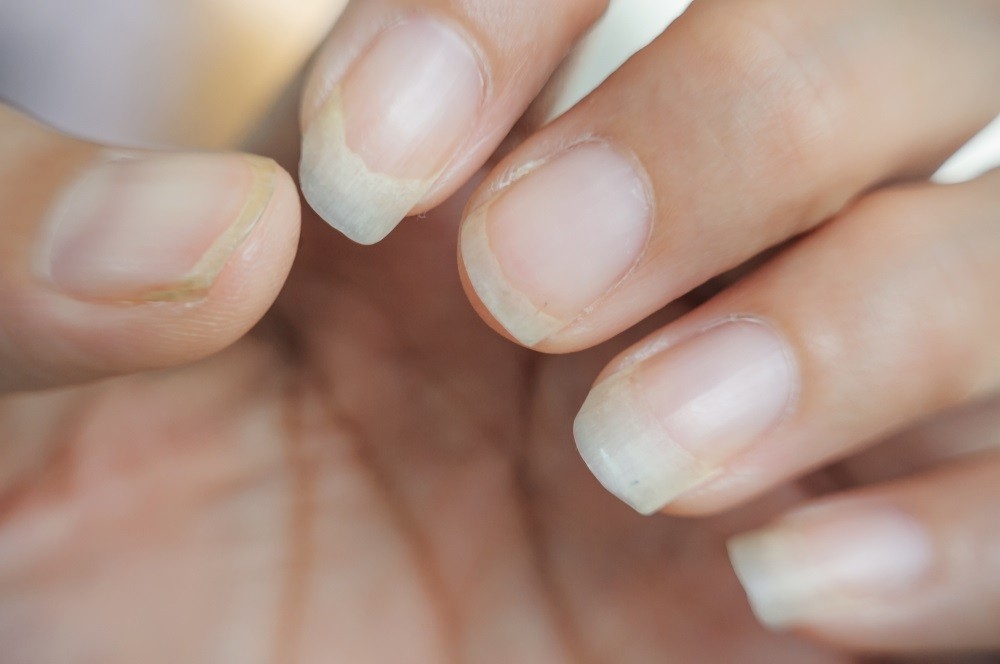
It’s easy to neglect your natural nails in these day of artificial nail improvements like acrylic, gel, polygel, and dip powder. After all, with only one visit to the nail salon, you may have your unsightly nails concealed and changed into a manicure that will endure for weeks.
Keep in mind that the health of your natural nails is important. The state of your health can frequently be inferred from the appearance and texture of your natural nails. Some problems with the nails may indicate a need for a vitamin supplement, while others may be indicators of more serious health issues that necessitate a trip to the doctor.
Whatever the case may be, being aware of the signs of unhealthy nails is crucial. We consulted a dermatologist and nail technicians to find out potential red flags. Please visit Maby blog to update the latest nail news.
How do unhealthy nails develop?
Dana Stern, M.D., a board-certified dermatologist and nail specialist, claims that substances like formaldehyde can lead to unhealthy nails. She warns that using nail strengtheners containing formaldehyde might lead to onycholysis (also known as nail separation) since it makes the nail brittle.
Nail fragility, peeling, splitting, and breaking can also result from overexposure to acetone because of the nail’s dehydration. Dr. Stern advises his patients to stay away from “treatment” goods that can only be removed with nail paint remover. These “are often just clear polishes in disguise and can actually exacerbate nail damage.”
Injuries, like when one buffs one’s nails too harshly or removes one’s cuticles, are another cause of unhealthy nails. The state of one’s nails may also be affected by one’s genetic makeup. Dr. Stern explains that brittle nails have both a genetic component and a direct association with age. The nail plate relies on the blood supply for oxygen and nutrients. Dr. Stern warns that nails may not obtain the nutrients they need to be healthy if you have a predisposition to poor peripheral circulation.
According to famous manicurist Michelle Saunders, nails become brittle and dry by excessive usage of artificial items such as nail paint, gel, or acrylic. Layers of your natural nails may be lost during the application and removal of these nail enhancements.
Symptoms of damaged nails
“Visible signs that your nails are not healthy include ridges in your nails, nails that easily break, and discoloration,” explains Syreeta Aaron, a professional nail artist and educator for LeChat Nails. The American Academy of Dermatology (AAD) states that nail polish and tobacco use are both potential causes of yellow discolouration. Thick, yellow nails that have ceased growing could indicate rheumatic or lung illness.
A bacterial infection can cause a pigmentation that looks greenish black. A black track over the nail, though, may indicate skin cancer. If you notice any nail discoloration, the American Academy of Dermatology advises making an appointment with a dermatologist as once to determine the root cause and proper course of therapy.
Grooves, pitting, and nail clubbing are also indicators of poor nail health. Nail pitting looks like a toothpick was placed in your nails, and deep grooves are depressions in the nail bed. Curved nails, also known as nail clubbing, make the fingertips appear larger and may be an indicator of respiratory problems. Nail grooves aren’t usually reason for alarm, but they can indicate that something slowed (or stopped) your nail growth for a period (AAD). However, psoriasis sufferers frequently have nail pitting, a symptom of the underlying condition that can also manifest as splitting nails.
Aaron warns that unhealthy nails can increase in thickness or decrease in thickness. An iron deficiency may be to blame for the spoon-shaped appearance of brittle, thinning nails.
Cure for dangerous fingernails
Nails that are healthy, according to Saunders, have a natural shine and are pliable. Dr. Stern also notes that the nail plate is uniform, the nail bed is pink with a clean white tip, and the cuticles are unbroken. If your nails don’t meet these criteria, it’s recommended to consult a dermatologist for advice.
Dr. Stern says that if you want your nails to be healthy, you should stop using highly processed treatments like gels, acrylics, and lacquer. If you really must remove nail enhancements, do so with care and look for products that contain skin-beneficial elements. “Look for nail treatments that have scientific validity and are formulated with natural ingredients,” advises Dr. Stern.
Nail cuticle oil can also help keep your nails supple and healthy. Oil and conditioner are great for nails, explains Saunders. To paraphrase an old beauty adage, “Remember, nails are made of keratin protein, so you want to treat nails as gently as you treat hair and condition often.”
To keep your nails healthy and strong, Aaron suggests taking a multivitamin and minerals including vitamin C, biotin, zinc, iron, and magnesium every day. In addition, please refer to: 8 Ways to Maintain Healthy Nails.
